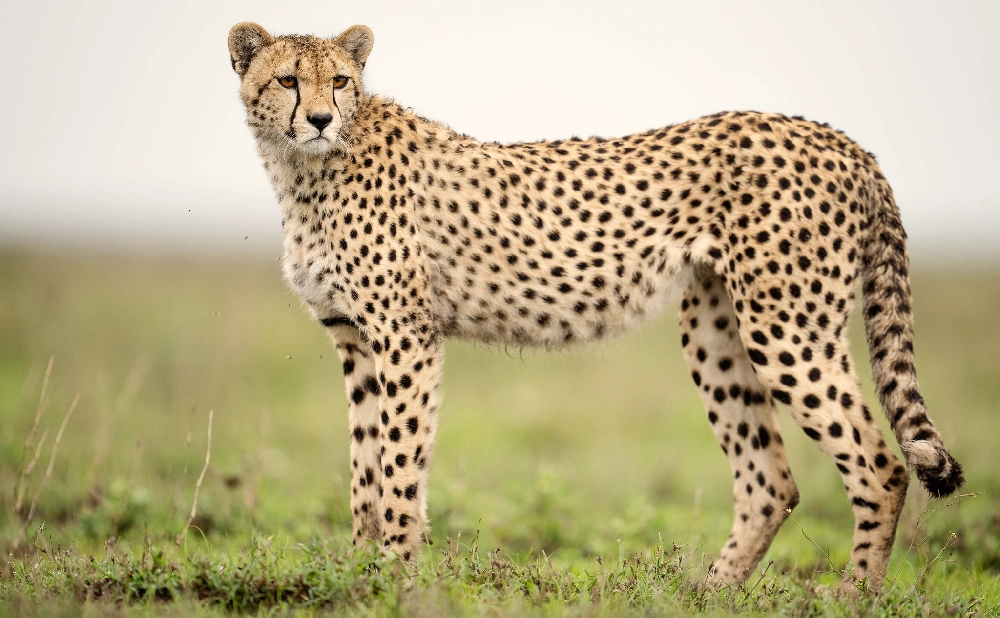
Experience a 9-day safari covering Tarangire, Serengeti, Ngorongoro, and Lake Manyara. See diverse wildlife and breathtaking landscapes.
What to See – Tarangire, Ngorongoro, Serengeti, Manyara Highlights:
Tarangire National Park is known for its incredible populations of elephants and the towering baobab trees that dot the landscape. The park’s rich variety of wildlife includes lions, giraffes, zebras, wildebeest, and more than 500 species of birds. The park is often less crowded, giving you a more intimate safari experience where wildlife can be observed up close.
Ngorongoro Crater, often referred to as the "Garden of Eden," is a geological marvel and a UNESCO World Heritage Site. The crater floor, which is home to an impressive concentration of wildlife, offers one of the best places to see the Big Five—lions, leopards, elephants, buffaloes, and rhinos—as well as flamingos around the crater lake. The vast plains of the crater also host a variety of herbivores, including zebras, wildebeests, and gazelles, making it a paradise for wildlife lovers and photographers.
Serengeti National Park, famous for the Great Migration of wildebeest, zebras, and gazelles, is a highlight of this safari. Depending on the time of your visit, you could witness the awe-inspiring river crossings, where thousands of wildebeest risk their lives crossing crocodile-infested waters. The Serengeti is also home to an array of predators like lions, cheetahs, leopards, and hyenas. The park offers one of the best opportunities for big game viewing and incredible photo opportunities.
Lake Manyara National Park, a lesser-known gem, is renowned for its tree-climbing lions and large flocks of flamingos that gather around the lake. The park’s diverse habitats, from dense forests to open plains, are home to a variety of wildlife, including elephants, giraffes, zebras, and buffaloes. The park also offers spectacular views of the Great Rift Valley, making it a great spot for nature lovers and photographers.
How to Dress on Safari:
For a comfortable safari, wear neutral-colored clothing such as khaki, brown, or green to blend into the environment and avoid attracting insects. The temperatures can vary, so pack light, breathable clothing for daytime activities, and bring a fleece or light jacket for cooler mornings and evenings, especially in high-altitude areas like Ngorongoro Crater. Sturdy, comfortable shoes or hiking boots are essential for game drives and walking safaris. You’ll also need a wide-brimmed hat, sunglasses, and sunscreen to protect yourself from the sun during the day. If you’re traveling in the green season (November - May), a light rain jacket is a good idea for occasional showers.
What to Carry on Safari: Here’s a checklist of what to bring on your safari:
- Binoculars for better wildlife viewing and birdwatching.
- A camera with extra batteries and memory cards to capture your wildlife encounters and stunning landscapes.
- A reusable water bottle to stay hydrated throughout the day.
- Insect repellent to guard against bites from mosquitoes and other insects.
- Personal medications and a basic first aid kit in case of emergencies.
- A small backpack to carry essentials such as snacks, sunscreen, camera, and binoculars.
Best Time to Travel & Safari Seasons:
Tanzania offers an incredible safari experience year-round, but the best time to visit depends on the kind of wildlife experience you're seeking:
- Dry Season (June - October): This is the peak safari season when the weather is dry, and animals are more concentrated around waterholes, making them easier to spot. The dry season also coincides with the Great Migration in the Serengeti, particularly from July to September when wildebeest, zebras, and gazelles make their dramatic river crossings. This is also an ideal time for wildlife viewing in Tarangire and Ngorongoro Crater.
- Green Season (November - May): While the green season brings rain, it has its own advantages. The lush, green landscapes are stunning, and the season is perfect for birdwatching, with migratory species arriving in the region. January to March is the calving season in the Serengeti, a great time to witness newborn wildebeest and the predators that follow them. The green season is also quieter, with fewer tourists, and offers lower safari prices.
This 9-day safari through Tarangire, Ngorongoro Crater, Serengeti, and Lake Manyara offers the chance to experience the best of Tanzania’s wildlife and landscapes. Whether you are coming for the migration, the diversity of animal species, or the spectacular scenery, this safari is perfect for anyone looking to immerse themselves in Tanzania’s natural beauty.